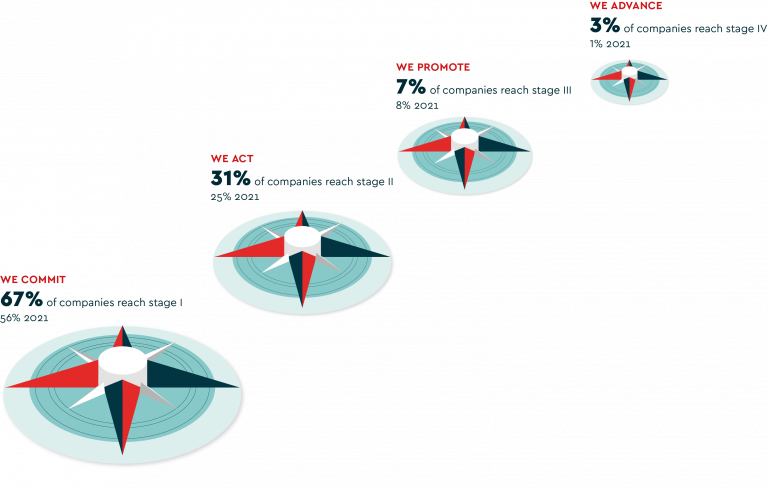Key Findings 2022 Recommendations 2022
Key Findings 2022 Recommendations 2022
The Gender Maturity Compass is a unique model that measures and maps cross-company progress along the four stages that organizations typically undergo as they move towards building I&D maturity. It includes inclusion & diversity metrics (recruitment, retention and promotion rates) as well as inclusive HR practices along the employee lifecycle. As such, the Gender Maturity Compass provides a more holistic snapshot of ‘lived’ I&D reality and culture underpinning the face of leadership.

As becomes clear at one glance, most companies in Switzerland still have a long way to go to reach gender maturity.
Stage I – we commit
The company has declared the intent to increase women’s representation in leadership.
Stage II – we act
The company has started to take concrete actions and measures its progress. At this stage, it typically focuses on recruitment and developing inclusive mindsets.
6 Unless the company already has a gender-balanced workforce
Stage III – we promote
The company’s processes and interactions are starting to reflect its gender maturity. The value of I&D has become ingrained in talent development and promotion; men’s and women’s employment percentages converge.
Stage IV – we advance
The company is now a truly diverse and inclusive place of work. The gender distribution across all hierarchical levels resembles a cylinder rather than a pyramid: Men and women are represented at all hierarchical levels at similar rates.